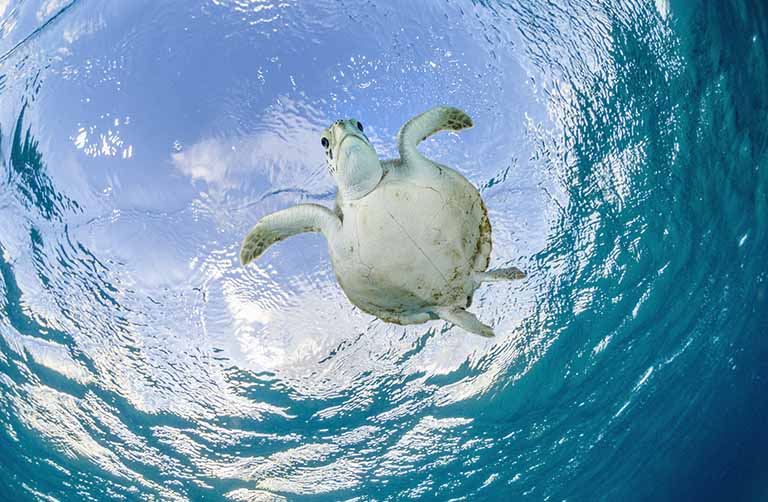Is There Such a Thing as Greener Flying? How Can You Help?
From the birth of the no-fly movement to carbon offsetting, eco-conscious plane travel is beginning to take off.
 Photo © Getty Images / Jim Watson
Photo © Getty Images / Jim Watson
If the aviation industry were a country, it would be in the world’s top 10 carbon polluters – in 2018, 4.3 billion passengers took flights, a new record, but more of us are questioning the impact flying is having on the planet. So, what can you do to reduce your carbon footprint and make the right travel choices? And, with a million people traveling in 10,000 aircraft, 24 hours a day, every day, is the aviation industry doing its bit to help?
- How have airlines reacted to climate change?
- Which airlines are the greenest?
- Should you offset your flights?
- What else can travelers do?
- Will flying eventually become an ethical no-no?
As the urgency of climate change intensifies and more of us are looking at different ways we can help the environment, air travel is just one of a number of areas that are under focus. The advent of the no-fly movement, popularized by teenage activist Greta Thunberg, has also put air travel under the spotlight. Although the International Air Transport Association (IATA) claims that planes are the source of only 2 percent of human-made carbon dioxide emissions, others claim the figure is much higher.
How have airlines reacted to climate change?
Most airlines have been fairly responsive, introducing carbon offset schemes, while others have pledged to go plastic-free. IATA, which represents airlines, said the CO2 emission of a standard flight was half the amount it was in 1990, thanks to fuel-efficient planes. While some have touted sustainable fuel as the answer, it may be too expensive to make it a feasible solution, although the IATA expects 2 percent of airline fuel to come from sustainable sources by 2025. Of course, this is overshadowed by the fact the IATA expects the airline industry to grow by 4 to 5 percent by the same year, dwarfing any green gains.
Which airlines are the greenest?
Alternative Airlines, an airline booking company, says the most eco-friendly airlines are the ones upgrading to a more environmentally friendly fleet; using more eco-friendly materials onboard (for example, using carbon fiber seats, reducing plastic and in-flight magazines), and serving vegan and vegetarian meals. Some of the carriers Alternative Airlines praises include Virgin Air, Qantas and KLM. One major difference between the airlines is fuel efficiency: the International Council on Clean Transportation found a 51 percent difference between the most fuel-efficient trans-Atlantic airline (Norwegian Air) and the least efficient (British Airways).
Should you offset your flights?
Many airlines offer passengers the chance of purchasing ‘carbon offsets’, which allows them to reduce the impact of their pollution by paying someone else not to. Doing so sends a clear message to airlines that you care about the impact air travel has on the planet.
Not everyone agrees that carbon offsetting is the answer, however. Friends of the Earth director Tony Juniper has said that carbon offset schemes are “a smokescreen used to avoid real measures to avoid action and carry on polluting. [They should] be a measure of last resort, after steps have been taken to cut emissions.”
It’s also important to know exactly what the ‘offset’ you are purchasing will be. Different carbon offset schemes fund different projects – from reforestation to renewable energy – and it’s hard to know how effective many of them are. “A plane that flies today emits carbon today," says Roger Tyres, a research fellow at the University of Southampton, who studies carbon offsetting. “It’s very hard to know how fast an offset can remove that amount of carbon from the atmosphere."
Just 10 percent of passengers opt to offset their flights anyway, according to Qantas, but airlines are focusing on offsetting their own greenhouse gas emissions with more sustainable and efficient aviation fuels. The Carbon Offsetting and Reduction Scheme for International Aviation, adopted by more than 80 percent of the industry in 2016, requires that airlines offset all international flights by 2021.
What else can travelers do to reduce their footprint?
- Reduce the number of flights you take where possible
- Write to airlines and comment on their social media accounts to encourage them to limit the amount of plastic they use
- Find out which airlines currently have the greenest policies (research everything from the type of fuel they use to their plastic policies) and try to use them when you do have to fly
- Bring your own food, or if you do opt to eat on board, go for vegetarian or vegan meals
- Fly direct. Doing so generates fewer greenhouse gases per journey – take-off and landing at stop-over airports use more fuel than flying at altitude
- Book your flight on a fuel-efficient aircraft such as a Boeing 787 Dreamliner or Airbus A350
- Pack lightly. Finnair claims it could save 1-2 million kilograms of fuel per year if each of its passengers packed 1 kilogram less luggage every time they flew.
Will flying become an ethical no-no?
It’s unlikely. For a start, the no-fly movement is a very European phenomenon, a continent blessed with easy rail access and free movement across borders. For an American or Australian traveler, the reality is more complicated, unless they want to just travel in their home countries. It’s also important to understand the positive effects the ‘jet age’ has had on the world: from bringing prosperity to far-flung corners of the planet to broadening minds and encouraging multi-culturalism, mass travel has been, on balance, a very good thing.
Related articles
Simple and flexible travel insurance
You can buy at home or while traveling, and claim online from anywhere in the world. With 150+ adventure activities covered and 24/7 emergency assistance.
Get a quote

2 Comments
This is an excellent summary of flying as sustainable travel. I managed to travel overland/sea from the UK to NZ in Oct/Nov 2019. I blogged about the experience of long distance trains and container ship travel.
Love to hear your opinions!
Can i come to Thailand now?